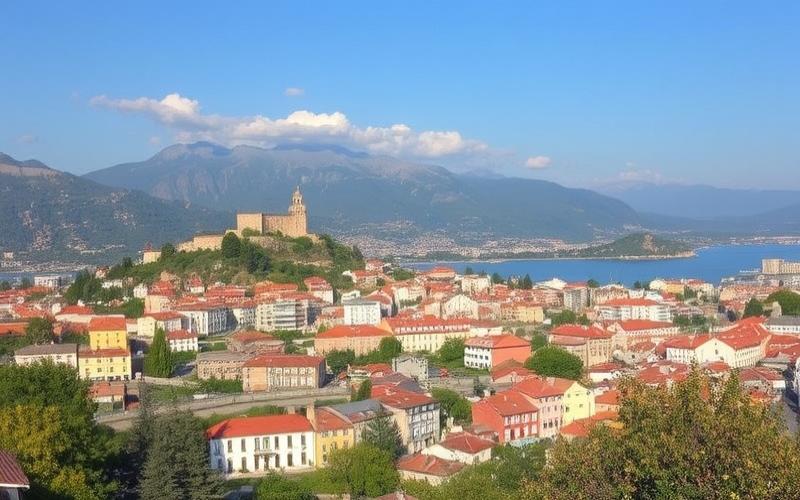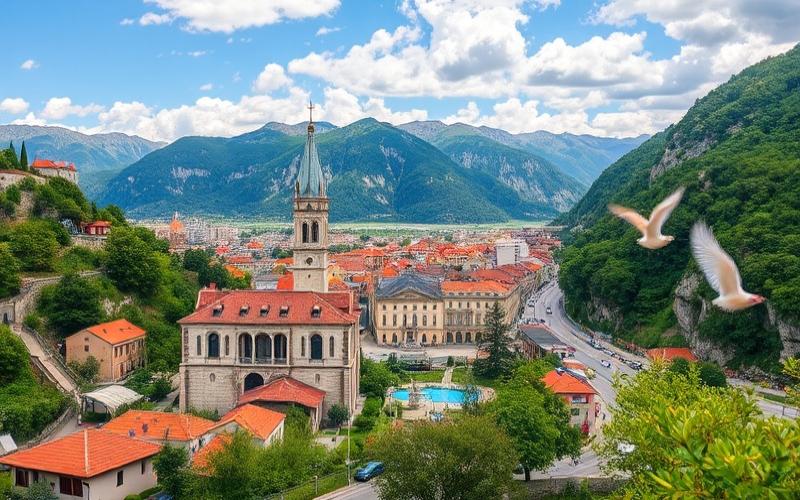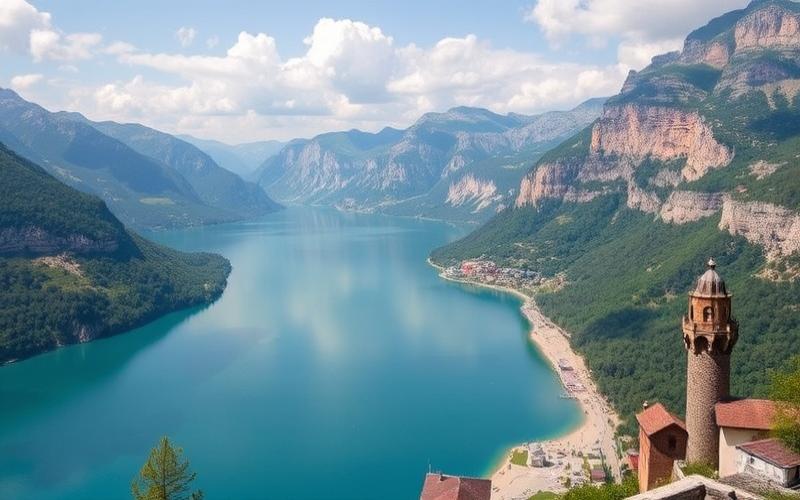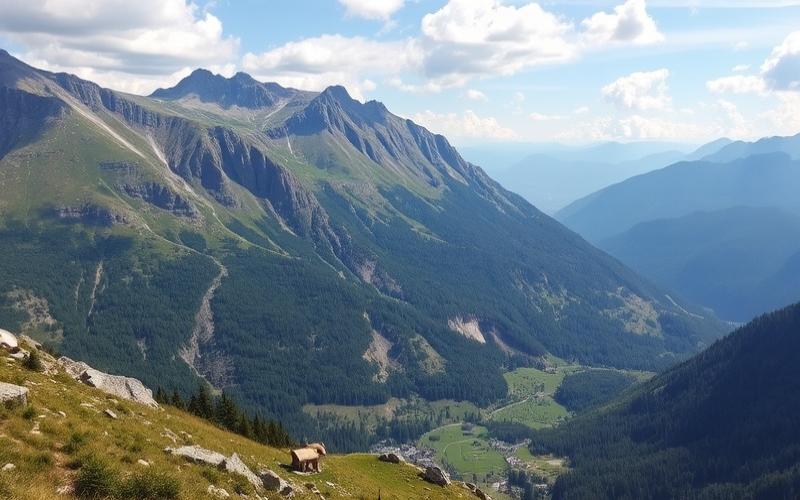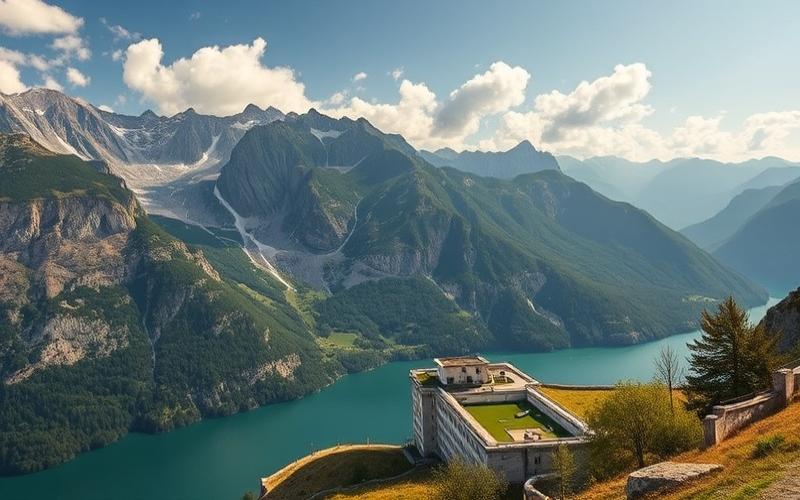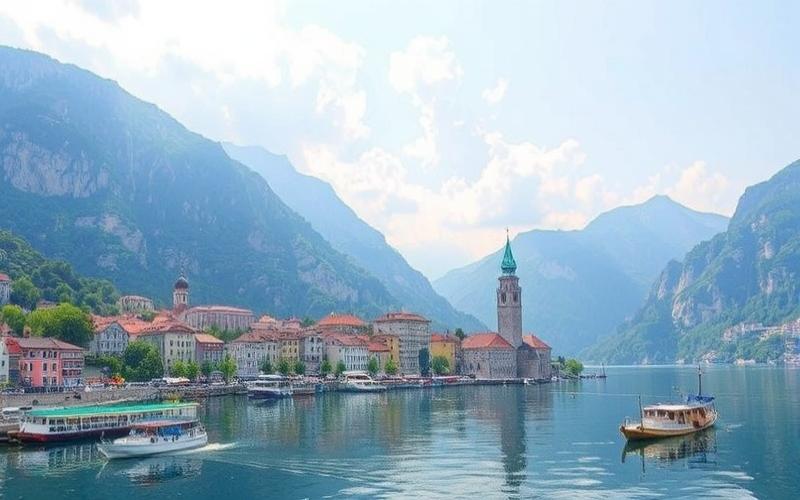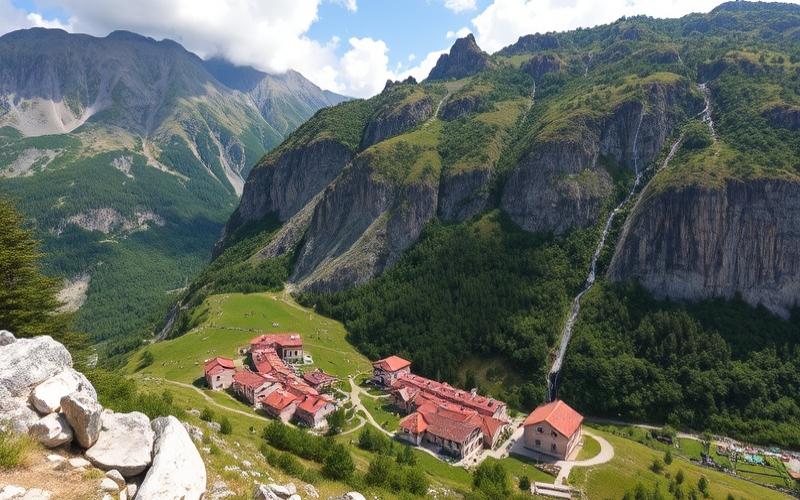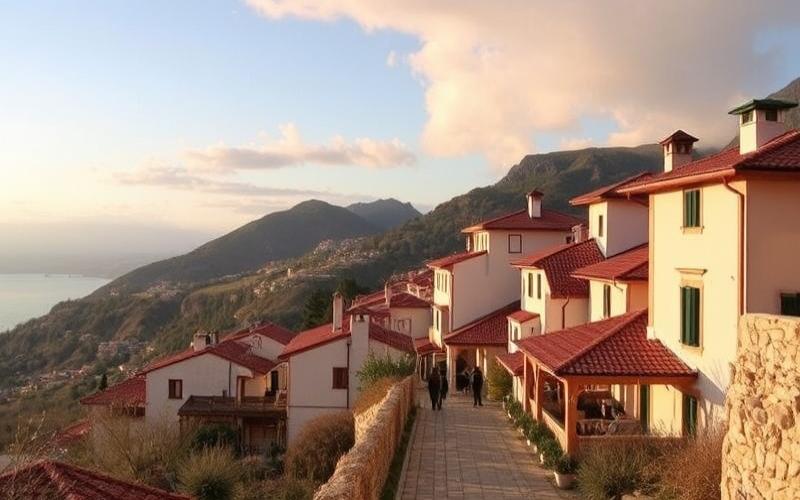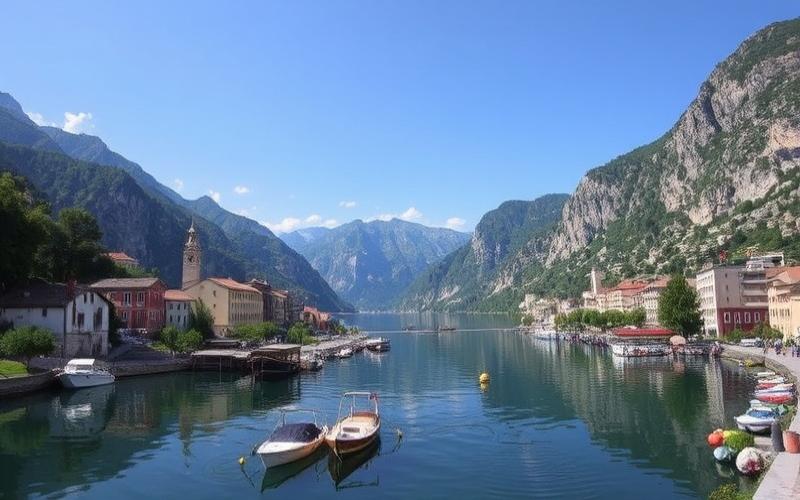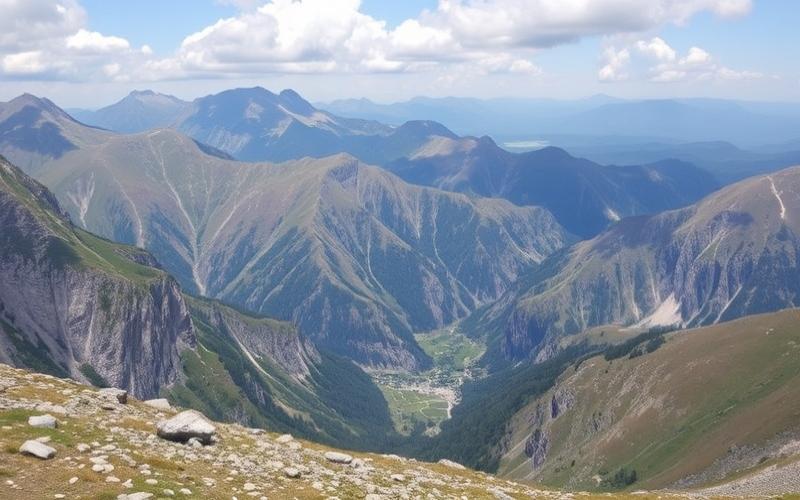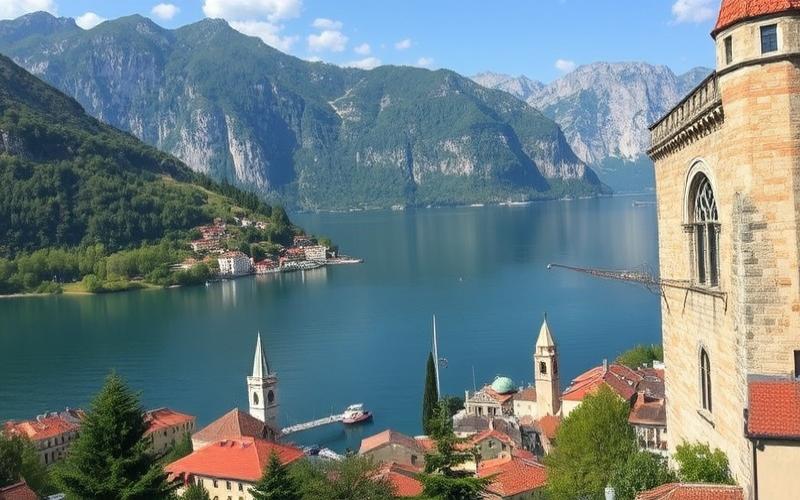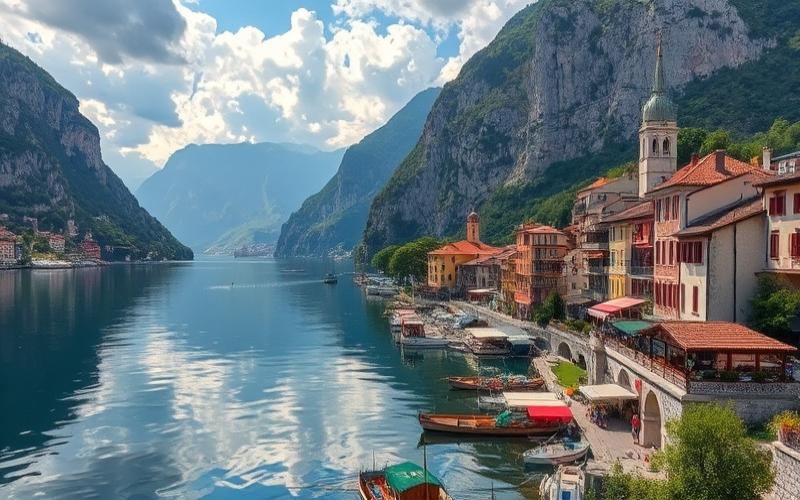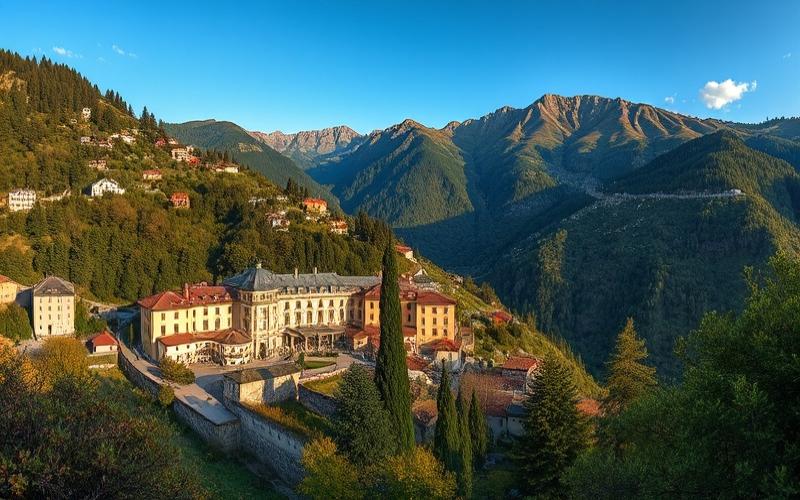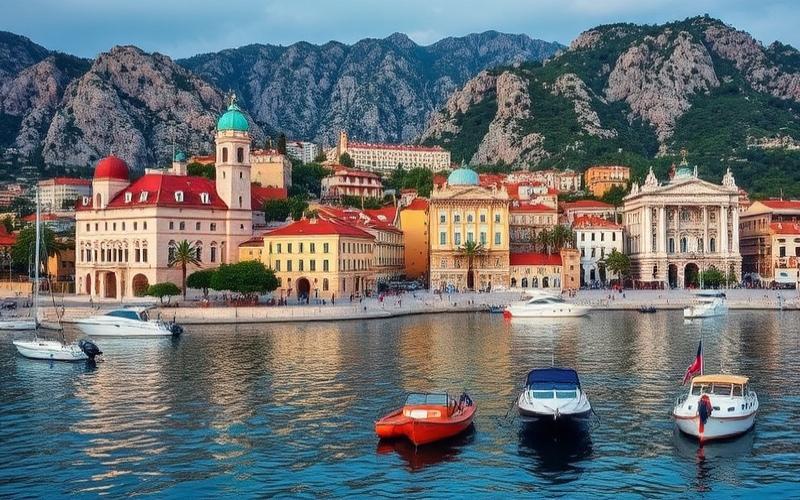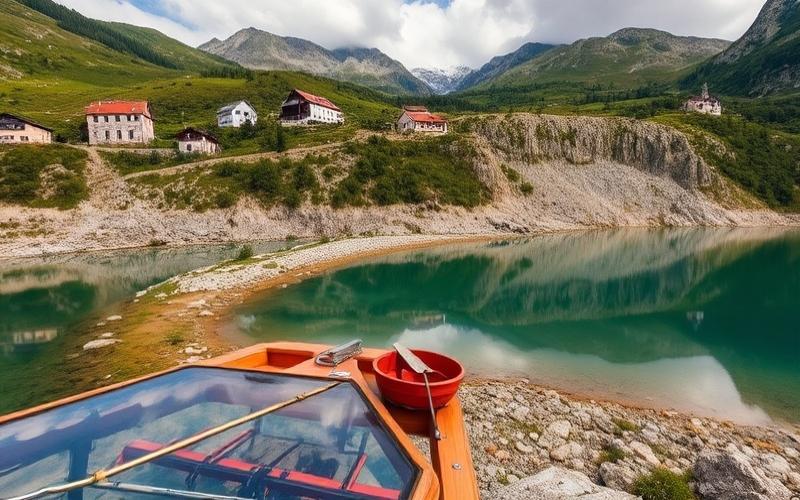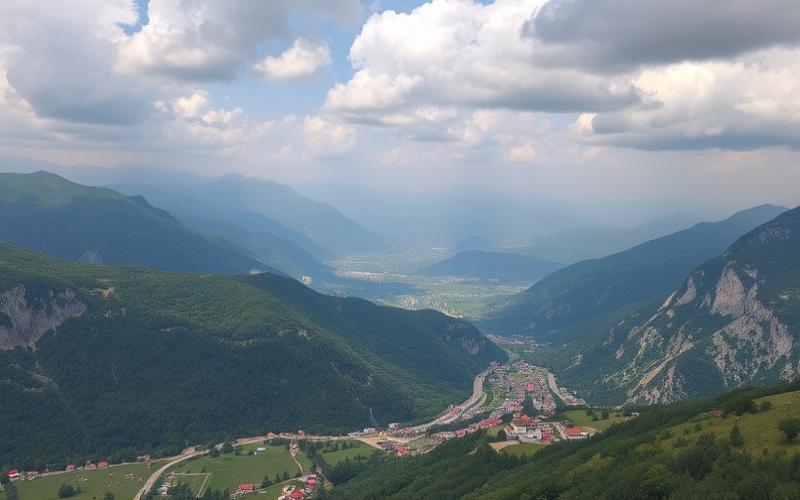
 Published on and written by Cyril Jarnias
Published on and written by Cyril Jarnias
Montenegrin Real Estate: Between Dream and Reality
In the Montenegrin real estate sector, the appeal of picturesque landscapes and enticing property prices can quickly captivate potential investors. Yet, behind these idyllic views often lie less glamorous realities, concealed by the increasing use of retouched photos.
This growing phenomenon transforms ordinary properties into dream assets, often far removed from their actual condition. So, how can one navigate this expanding market while avoiding the pitfalls of misleading images?
The Truth Behind Photographic Tricks
Explore the underlying use of photographic tricks in Montenegro’s real estate landscape, an often underestimated but unavoidable challenge for savvy buyers.
Good to Know:
Retouched photos can hide major flaws like moisture, cracks, or an unattractive environment. Always visit the property in person or request an unedited virtual tour.
The Pitfalls of Retouched Photos in Montenegro Real Estate
Retouched photos are commonly used in Montenegro real estate to visually enhance properties and attract more potential buyers. This practice allows agencies to present their listings from a more attractive angle, highlighting the property’s strengths and improving the overall aesthetics of the images.
Main Reasons for Photo Retouching in Real Estate:
- Increase listing attractiveness to capture buyer attention more quickly
- Highlight certain aspects (brightness, space, cleanliness)
- Standardize visual quality on websites or listing platforms
- Save time with simple tools allowing for quick enhancement
However, these practices can also mislead potential buyers when retouching goes beyond simple aesthetic adjustments and significantly alters the reality of the presented property.
| Differences Between Retouched Photos and Reality | Concrete Examples of Retouching |
|---|---|
| Exaggerated brightness | Artificial addition or enhancement of light |
| Saturated colors | Excessive color enhancement to make the space appear warmer |
| Removal of imperfections | Digital erasure of wall stains, cracks, or clutter |
| Size modification | Use of wide-angle lenses creating false impression of space |
Potential Consequences for Different Parties:
- For the buyer:
- Disappointment during actual visit if property doesn’t match expectations created by photos
- Possible financial loss due to purchase based on mistaken perception
- Increased distrust toward the professional or local market
- For the seller/agency:
- Legal risk if deception proven (false advertising)
- Damage to professional reputation
- Potential cancellation of agreement if serious breach discovered
Tips to Protect Yourself Against These Pitfalls:
- Always request an in-person visit before any decision
- Ask specific questions about what was digitally modified in each photo
- Consult other buyers or check multiple independent sources regarding the same property
Regarding local regulations in Montenegro, it’s essential that any advertising representation accurately reflects the property’s actual condition. Advertising laws explicitly prohibit any form of misleading presentation that could potentially mislead a buyer. Thus, while some enhancements are tolerated (slight brightness/contrast adjustments), any major alteration aimed at hiding structural defects or substantially modifying the actual appearance may be considered illegal.
Key Takeaway
Digital tools now greatly facilitate these practices: they should only serve to provide a fair and enhanced view of the property without ever distorting its true nature.
Good to Know:
Retouched photos in Montenegro real estate are often used to make properties more attractive, sometimes distorting reality to the detriment of potential buyers. Typical retouching includes enhancing brightness, enlarging spaces, or removing undesirable elements like antennas or electrical wires. These manipulations can create a substantial gap between virtual perception and reality, thus deceiving buyers and creating disappointment during in-person visits. Consequences for buyers include purchases based on unrealistic expectations, while sellers risk losing credibility. To protect against these pitfalls, buyers are advised to personally visit properties and request unretouched photos. While there’s no specific legislation on real estate photo retouching in Montenegro, general regulations stipulate that advertising must be honest and non-deceptive, which could be invoked in case of dispute.
How to Verify a Real Estate Listing with Retouched Photos
Verifying real estate listings with retouched photos in Montenegro requires a combination of vigilance, technological tools, and good investigative practices. Effective strategies rely on identifying retouching clues, using specialized software, and direct confrontation with the property’s reality.
Strategies to Detect Retouched Photos:
- Observe frequent visual anomalies: unrealistic room proportions, overly saturated or uniform colors, absence of imperfections (stains, cracks) that should logically appear in an older residence.
- Pay attention to virtual staging: digitally added furniture or artificial decoration that can give false impression of space or hide certain defects.
- Identify strategic framing: some listings only highlight specific angles to showcase sea or mountain views while hiding less attractive immediate surroundings.
Available Technological Tools to Verify Image Modifications:
| Tool/Technology | Main Functionality |
|---|---|
| AI Software (e.g., InterieurAI) | Automatic detection of modified areas |
| Mobile Applications | Quick analysis from smartphone |
| EXIF Checkers | Consult metadata to spot anomalies |
Solutions like InterieurAI can analyze whether furniture has been added or certain elements erased. Mobile applications also offer preliminary analysis while examining EXIF data can reveal if multiple manipulations occurred on the image file.
Practical Tips for Real Estate Investors in Montenegro:
- Always request a live virtual tour via video conference to compare what’s shown with the property’s actual condition.
- Prioritize an on-site physical appointment before any final decision to validate compliance between listing and reality.
- Compare multiple similar listings in the same geographic area; this not only helps contextualize prices but also更容易识别明显美化的图像相对于当地真实市场的图像。
- Be particularly wary of photos where only certain landscapes are highlighted (panoramic sea view without showing the street, mountains without urban context), as this can mask the absence of real immediate advantages around the property.
Local Particularities in Montenegro Often Emphasized by Photos:
- Excessive valuation of natural setting: spectacular views tightly framed while direct neighborhood isn’t visible or representative;
- Selective presentation: only a few renovated rooms photographed while the rest of the residence remains hidden;
- Artificial lighting: light effects exaggerating interior brightness and volume.
Key Takeaway: Systematic comparison between published images and reality observed during a visit – whether virtual or physical – remains essential to avoid any disappointment related to photographic manipulation. Adopting these strategies offers foreign and local investors more security in their dealings within the Montenegrin real estate market.
Good to Know:
To verify a real estate listing in Montenegro and identify retouched photos, it’s advisable to use specialized software for detecting image modifications, such as FotoForensics or JPEGsnoop, which analyze metadata and visual consistency of photos. Investors can also request a live virtual tour ensuring total transparency, or organize an on-site appointment to corroborate presented images. It’s crucial to compare multiple listings to obtain a realistic perspective of the local market and avoid pitfalls related to retouched photos, which can exaggerate characteristics like sea views through advantageous framing or manipulate lighting to enhance interiors. Knowing these tricks and adopting a proactive approach helps avoid disappointments and make informed decisions in Montenegro’s dynamically evolving real estate market.
Tips to Avoid Real Estate Scams
Warning Signs to Watch for in Real Estate Listings
- Excessively retouched or poor-quality photos that mask the property’s reality.
- Listings offering abnormally low prices for the local market.
- Overly vague or excessively flattering descriptions without concrete information (exact area, precise location).
- Absence of clear contact details or request for contact only through instant messaging.
| Warning Sign | Concrete Example |
|---|---|
| Overly perfect photos | House shown from a single angle, no visible defects. After actual visit: condition was very deteriorated. |
| Too attractive price | Downtown apartment listed at half price; once deposit paid, seller disappears. |
Tips for Verifying Property Information
- Always request to visit the property in person before any financial commitment.
- Demand presentation of original legal documents: property title, cadastral certificate and building permit if applicable.
- Cross-reference provided information with local cadastre and official land registry data.
Importance of Working with Licensed Real Estate Agents
- Exclusively prefer agencies recognized and legally registered in Montenegro.
- Verify professional license and research reputation through client reviews or specialized forums.
Quick checklist to evaluate an agency:
- Request official registration number
- Consult recent client reviews
- Refuse any transaction where agent declines physical meeting
Recommendations for Confirming Owner Identity
- Require official identity proof (passport/National ID card) from seller during preliminary document signing.
- Carefully compare this document with name appearing on presented property title.
Concrete Examples and Illustrative Testimonials
A potential buyer was attracted to a villa listed at an unbeatable price. The photos were magnificent but no visit was possible “due to construction work.” After paying a requested deposit “to reserve,” it turned out that neither the villa nor even its address actually existed.
Another frequent case involves fake real estate agents: a scammer poses as professional, charges upfront administrative fees then disappears without follow-up — several victims reported this classic method to local authorities in recent months.
Practical Summary
To avoid real estate scams in Montenegro:
- Be vigilant about suspicious listings (retouched photos/low prices)
- Always physically inspect the property
- Carefully analyze all legal documents
- Use only recognized agencies
- Systematically verify owner identity before any financial transfer
Good to Know:
When searching for property in Montenegro, be vigilant about listings where photos appear excessively retouched, as they can hide significant defects. A good way to avoid scams is to insist on visiting the property in person and request thorough examination of legal documents, such as property titles. It’s crucial to work with licensed real estate agents and verify their agency’s reputation. Also ensure the legitimate identity of the owner; one notable testimony involves someone who lost their deposit dealing with an individual posing as the legitimate owner. Always take time for thorough research and consult local experts to safely navigate the Montenegrin real estate market.
The Importance of a Realistic Virtual Tour
Realistic virtual tours bring considerable advantages to Montenegro’s real estate market, for both local and international buyers. They particularly stand out for their ability to provide an immersive and faithful experience, thereby reducing risks associated with common visual manipulation through retouched photos.
Key Benefits of Realistic Virtual Tours in Montenegro Real Estate:
- Total transparency of property condition: unlike photos that can conceal certain defects or embellish reality through retouching, a 3D or 360° virtual tour allows exploring each room as if being on site.
- Honesty in presentation: VR technology makes it practically impossible to hide structural problems (moisture, cracks, poor lighting), thus strengthening trust between seller and buyer.
- Better assessment of actual volumes and layouts: buyers can precisely judge space sizes, possible furniture, and even simulate certain arrangements.
- Time savings for efficiently selecting properties truly matching criteria without unnecessary travel — a major advantage in international market where many purchasers reside far from Montenegro.
Concrete Examples Where Virtual Tours Prevented Bad Surprises:
- A foreign investor interested in an apartment in Old Kotor noticed through an immersive tour that some common areas were in poor condition while they weren’t visible in published photos. Thus avoided a purchase that would have required more work than anticipated.
- A family wanting to buy a villa near Budva discovered during virtual exploration that the garden directly faced a busy road — detail hidden by advantageous angles in traditional photos. They could redirect their search to a quieter neighborhood even before arriving in the country.
Specific Technologies and Platforms Used in Montenegro:
| Platform/Technology | Main Features |
|---|---|
| TrueVirtualTours | Immersive 3D/VR tours with free navigation |
| Virtual Tours by eGO Real Estate | CRM integration + interactive 360° tours |
| Standard Tools (Matterport) | Precise modeling and easy sharing |
These solutions are adopted by both local agencies and some international portals specialized in Montenegrin real estate. They allow potential buyers not only to quickly explore multiple properties but especially to avoid any disappointment related to gaps between marketing images and observable reality during physical visits.
Immersive technologies now make many of the old visual “traps” in Montenegro’s real estate sector obsolete; they establish an unprecedented climate of trust conducive to both peaceful transactions and secure investment.
Good to Know:
In Montenegro’s real estate market, where retouched photos often embellish reality, a realistic virtual tour offers essential transparency for potential buyers. Using technologies like Matterport or EyeSpy360, these tours allow detailed property exploration, revealing spaces as they truly are, without visual manipulation. This helps buyers better assess dimensions, lighting, and general condition of premises, thus avoiding costly disappointments after purchase. A concrete example shows how a family avoided purchasing an apartment thanks to virtual tour, discovering a view obstructed by neighboring building that photos didn’t show. These technologies ensure not only honesty and accuracy but also save time and resources by eliminating unnecessary visits.
Disclaimer: The information provided on this website is for informational purposes only and does not constitute financial, legal, or professional advice. We encourage you to consult qualified experts before making any investment, real estate, or expatriation decisions. Although we strive to maintain up-to-date and accurate information, we do not guarantee the completeness, accuracy, or timeliness of the proposed content. As investment and expatriation involve risks, we disclaim any liability for potential losses or damages arising from the use of this site. Your use of this site confirms your acceptance of these terms and your understanding of the associated risks.

